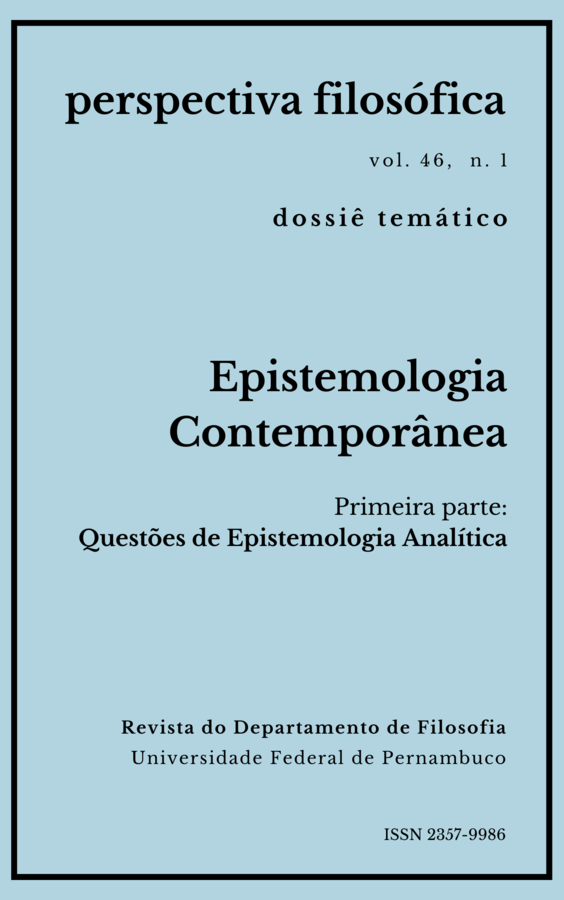Razões para a rejeição do autonomismo radical no debate acerca da avaliação moral de obras de arte
DOI:
https://doi.org/10.51359/2357-9986.2019.240738Keywords:
art criticism, art’s moral assessment, radical autonomism, moderate moralism, aestheticismAbstract
The way to grounding the moral assessment of artworks stumbles upon the challenges that are still imposed in contemporary times. This article took avail, for the most part, of Noël Carroll’s moderated moralist argumentation, as well as his insight about how this debate should be performed. The position to be confronted is named by him radical autonomism, which is essentialist upon art’s value. We pointed out the problems in the autonomist’s argumentation, seeking replies to the argument of the commum-denominator and the argument of cognitive triviality. We also advocated a pluralism over art’s value, proposing a mitigated view of aesthetic experience, which entails that the scope of the artistic value includes many fields of value, the aesthetic being just one of them.References
ARGAN, Giulio C. Arte Moderna. São Paulo: Companhia das Letras, 1998.
BEARDSLEY, Monroe. "An Aesthetic Definition of Art". Em CURTER,Hugh (ed.). What is Art?. New York: Haven, 1983.
BEARDSLEY, Monroe. The Aesthetic Point of View. London: CornellUniversity Press, 1982.
BELL, Clive. Arte. Lisboa: Texto & Grafia, 2009.CARROLL, Noël. Art In Three Dimensions. Oxford: Oxford UniversityPress, 2010.
BELL, Clive. "Art and the Domain of the Aesthetic".British Journal ofAesthetics 40(2), 191-208, 2000.
BELL, Clive. Beyond Aesthetics: Philosophical Essays. Cambridge, UK:Cambridge University Press, 2001.
BELL, Clive. "Enjoyment, Indifference, and Aesthetic Experience".British Journal of Aesthetics 41 (1), 81-3, 2001b.
BELL, Clive. Filosofia da arte. Lisboa: Texto & Grafia, 2010b.
BELL, Clive. “Formalism”. Em GAUT, Berys & LOPES, D.M. TheRoutledge Companion to Aesthetics. London, UK: Routledge, 2003.
BELL, Clive. On Criticism. New York: Routledge, 2008.
BELL, Clive. “On the Historicaland Structure of Monroe Beardsley’sAesthetics: An Appreciation”. The Journal of Aesthetic Education, Vol. 44,No. 1, pp. 2-10, 2010c.
BELL, Clive. "Recent Approaches to Aesthetic Experience". The Journalof Aesthetics and Art Criticism Volume 70, issue 2, 2012.
BELL, Clive. (ed.). Theories of Art Today. Madison: University ofWisconsin Press, 2000b.
COOPER, David E.“Aesthetic Attitude”. Em DAVIES, S.; HIGGINS,K.M.; HOPKINS, R.; STECKER, R.; COOPER, D.E. A Companion toAesthetics (2nd ed). Oxford: Blackwell Publishing, 2009.
DAVIES, S.; HIGGINS, K.M.; HOPKINS, R.; STECKER, R.; COOPER,D.E. A Companion to Aesthetics (2nd ed). Oxford: Blackwell Publishing,2009.
DICKIE, George. “Beardsley's Phantom Aesthetic Experience”. The Journalof Philosophy, Vol. 62, No. 5 (Mar. 4, 1965), pp. 129-136.
DICKIE, George. “The Myth of the Aesthetic Attitude”. AmericanPhilosophical Quaterly 1, p. 56-65, 1964.
GIOVANNELLI, A. Artistic and Ethical Values in the Experience of Narratives (Dissertação de pós-doutorado em filosofia), University of Maryland, College Park, USA. 2004, 403 f. Disponível em:http://drum.lib.umd.edu/bitstream/handle/1903/1474/umi-umd1595.pdf;jsessionid=F2C922546C5EF48DE97129C898945FCB?sequence=1
DICKIE, George. “The Ethical Cristicism of Art: A New Mapping of theTerritory”. Philosophia 35:117–127, 2007. KIERAN, Matthew. “Art, Imagination and the Cultivation of Morals”. Em BERMUDÉZ, J & GARDNER, S. (ed.). Art and Morality, London:Routledge, 2003.
DICKIE, George. “Art, Morality and Ethics: On the (Im)Moral Characterof Art Works and Inter-Relations to Artistic Value”. Philosophy Compass ½(2006) 129-143.
DICKIE, George. Revealing Art. London: Routledge, 2004.
LEVINSON, Jerrold. Aesthetics and Ethics: Essays at the Intersection.Cambridge, UK: Cambridge University Press, 1998.
MCLAUGHLIN, Thomas M. “Clive Bell's Aesthetic: Tradition andSignificant Form”. The Journal of Aesthetics and Art Criticism Vol. 35 No.4,p.433-443, 1977.
SHELLEY, James. "The Concept of the Aesthetic", The StanfordEncyclopedia of Philosophy (Winter 2015 Edition), Edward N. Zalta (ed.),Disponível em: http://plato.stanford.edu/archives/win2015/entries/aesthetic-concept/, acesso em abril de 2016).
STECKER, Robert. Aesthetics and the Philosophy of Art: An Introduction(2nd ed). Plymouth, UK: Rowman & Littlefield, 2010.
WHEWELL, David. Aestheticism. DAVIES, S.; HIGGINS, K.M.;HOPKINS, R.; STECKER, R.; COOPER, D.E. A Companion to Aesthetics(2nd ed). Oxford: Blackwell Publishing, 2009.
WILDE, Oscar. Obras Completas. Rio de Janeiro: Nova Aguilar, 2003.
Downloads
Published
Issue
Section
License
A Revista Perspectiva Filosófica orienta seus procedimentos de gestão de artigos conforme as diretrizes básicas formuladas pelo Conselho Nacional de Desenvolvimento Científico e Tecnológico (CNPq). http://www.cnpq.br/web/guest/diretrizesAutores que publicam nesta revista concordam com os seguintes termos:
Os autores mantém os direitos autorais e concedem à revista o direito de primeira publicação, sendo o trabalho simultaneamente licenciado sob https://creativecommons.org/licenses/by/4.0/deed.pt_BR que permite o compartilhamento do trabalho com reconhecimento da autoria e publicação inicial nesta revista.
Os autores têm autorização para assumir contratos adicionais separadamente, para distribuição não-exclusiva da versão do trabalho publicada nesta revista, com reconhecimento de autoria e publicação inicial nesta revista (Consultar http://opcit.eprints.org/oacitation-biblio.html).

Esta revista está licenciada com uma Licença Creative Commons Atribuição 4.0 Internacional.













